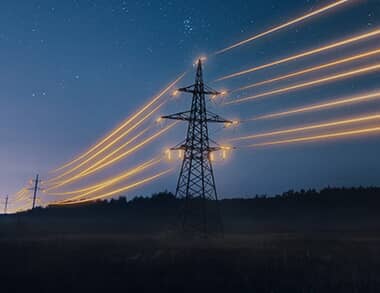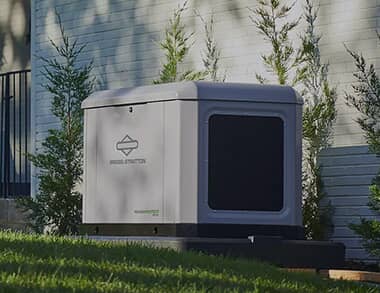Ensuring Generator Safety in Your Operations

Regular inspections of your standby generator do more than just ensure the longevity of the unit; they keep your personnel safe from injuries. The frequency of inspections depends heavily upon your standard usage of the unit. An EGSA certified technician can help you identify what tests need to be performed based on your unit and manufacturer's recommendations.
This includes how often you should be performing inspections on each component. The following are some common things that standby generator operators should plan for when establishing a maintenance schedule for their unit. Each of these will go a long way towards promoting generator safety in your workplace.
An inspector should test to ensure that all bearings are properly greased and packed. Hose clamps should be tight and hoses should be inspected for signs of leaks, rot or other damage. The inspector should examine the oil and test it for contamination, viscosity, and to ensure oil reservoirs are at the proper level.
During an inspection, coolant levels should be examined and tested to ensure the properly rated coolant is in use. This is crucial, as inadequate coolant levels, or the use of the wrong coolant can result in overheating and sudden shutdown.
All term screws should be tested for tightness and any missing screws should be replaced. Likewise, air filters should be inspected for signs of blockage or damage. Damaged or missing filters should be replaced immediately, as a blocked filter can significantly reduce efficiency and may cause permanent damage to the generator.
Voltage and battery operation should be checked and any variations noted. It is also vital to inspect battery cables and the battery charger for signs of damage or corrosion. How often a battery needs to be replaced depends heavily on the operational environment and the number of hours the unit operates.
Fan belts should be inspected for signs of wear, rot or other damage that could imperil operational safety. Missing or damaged belts should be replaced immediately. Often, there will be audible and visual warning signs that an inspector can note that signal an impending belt failure.
Finally, it is vital for generator safety to test fuel supplies and storage racks/tanks for sturdiness and any signs of water leaks, rust, or other damage that could contaminate the generator's fuel supply.
There are also a number of tests related to the load bank that should be performed on a regular basis. These include checking the temperature with a thermal imaging camera, performing visual inspections for water, coolant, oil, and fuel leaks. Additionally, the engine alternator, gauges, and fuel should be tested. Most importantly, it's vital to adhere to manufacturer's safety and inspection recommendations. Failing to do so can void any warranties on the unit and can expose personnel to serious, potentially fatal injuries.
We invite you to contact Gen-Tech at (800) 625-8324 for more information on our generator safety inspection services. Our EGSA certified technicians will be happy to answer your questions and schedule a detailed inspection of your unit to ensure safety.
This includes how often you should be performing inspections on each component. The following are some common things that standby generator operators should plan for when establishing a maintenance schedule for their unit. Each of these will go a long way towards promoting generator safety in your workplace.
Standard Inspections
An inspector should test to ensure that all bearings are properly greased and packed. Hose clamps should be tight and hoses should be inspected for signs of leaks, rot or other damage. The inspector should examine the oil and test it for contamination, viscosity, and to ensure oil reservoirs are at the proper level.
During an inspection, coolant levels should be examined and tested to ensure the properly rated coolant is in use. This is crucial, as inadequate coolant levels, or the use of the wrong coolant can result in overheating and sudden shutdown.
All term screws should be tested for tightness and any missing screws should be replaced. Likewise, air filters should be inspected for signs of blockage or damage. Damaged or missing filters should be replaced immediately, as a blocked filter can significantly reduce efficiency and may cause permanent damage to the generator.
Voltage and battery operation should be checked and any variations noted. It is also vital to inspect battery cables and the battery charger for signs of damage or corrosion. How often a battery needs to be replaced depends heavily on the operational environment and the number of hours the unit operates.
Fan belts should be inspected for signs of wear, rot or other damage that could imperil operational safety. Missing or damaged belts should be replaced immediately. Often, there will be audible and visual warning signs that an inspector can note that signal an impending belt failure.
Finally, it is vital for generator safety to test fuel supplies and storage racks/tanks for sturdiness and any signs of water leaks, rust, or other damage that could contaminate the generator's fuel supply.
There are also a number of tests related to the load bank that should be performed on a regular basis. These include checking the temperature with a thermal imaging camera, performing visual inspections for water, coolant, oil, and fuel leaks. Additionally, the engine alternator, gauges, and fuel should be tested. Most importantly, it's vital to adhere to manufacturer's safety and inspection recommendations. Failing to do so can void any warranties on the unit and can expose personnel to serious, potentially fatal injuries.
We invite you to contact Gen-Tech at (800) 625-8324 for more information on our generator safety inspection services. Our EGSA certified technicians will be happy to answer your questions and schedule a detailed inspection of your unit to ensure safety.
Topics:
From Insights to Power: Let’s Talk Solutions
Whether you need emergency power, maintenance, or expert guidance on your generator system, Gen-Tech has you covered. Our experienced team provides industry-leading service to keep your power running when it matters most. Call (800) 625-8324 to discuss your power generation needs today!
Contact Us













